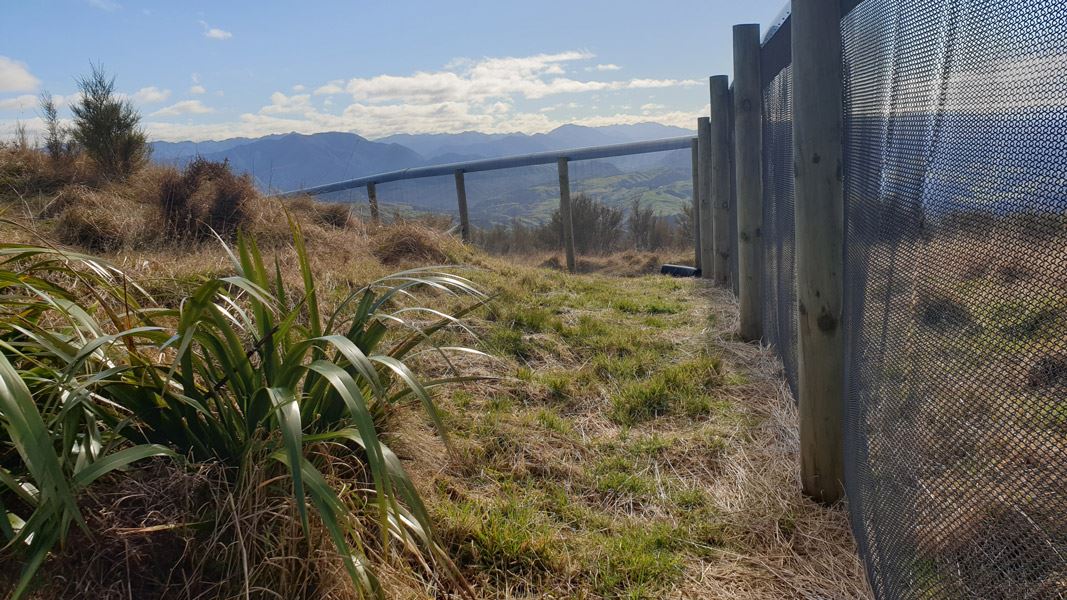Archived content: This media release was accurate on the date of publication.
Date: 09 June 2020
Hawke's Bay DOC rangers heading back into the field have been greeted by high ferret catches in their traplines, suggesting this predator species has had a bumper breeding season in the Bay.
Twelve ferrets were removed from traplines around Boundary Stream, a tract of conservation and farm land protected by intensive management of introduced pests. It is home to range of precious species, including kiwi, kākā, pekapeka/bats and five species of wētā.
DOC Ranger Bernie Kelly says, "After a lengthy lockdown, it was good to be back walking the traplines at Boundary Stream along with my teammates. But the very first trap revealed a rather chunky dead ferret.
"Twelve ferrets might not sound like a lot, but considering the numbers we normally find and the damage these guys can do it's significant. Ferret catch numbers usually start peaking in May and June, so being able to get back out there now is very timely."
This year has seen an increase of nearly 20% of ferret catches in DOC traps in the area. In the trapping season from July 2018 to June 2019, 39 ferrets were caught. In 2019/20 so far 48 ferrets have been caught, with a few weeks remaining in the trapping season.
Ferrets pose a slightly different challenge than stoats and weasels for a range of native species, including kiwi. Autumn is when young ferrets begin to move into new territories and, unlike many other pest predators, ferrets are able to kill an adult kiwi. It only takes one ferret to kill many birds and it can happen very quickly.
Senior Biodiversity Ranger Denise Fastier says one of the driving factors for high ferret numbers this year may be an abundance of their preferred food source – rabbits.
"The area around Boundary Stream is prone to high rabbit populations, especially in dry conditions and it's been a dry summer. Lots of rabbits have been seen in the area this year and prey numbers drive predator numbers," she says.
"However, when the rabbit population starts to drop, ferrets will look for an alternative to their usual favourite meal. That's when you might start to see a higher impact on native species like lizards, wētā and birds – something called 'prey switching', which has happened before at Boundary Stream. It's crucial we get on top of the mustelid population out there as soon as we can."
Options are currently being considered for managing this risk, including putting out additional traps, increasing how often traps are checked and using lures such as ferret bedding to attract ferrets/mustelids to the traps.
There are currently 594 traps in the Boundary Stream trapline network, which are serviced monthly by DOC rangers and by three community groups who have each 'adopted' a trapline to maintain. The traps target key predator species in the area, including rats, mustelids and feral cats.
Anyone interested in getting involved in supporting predator control efforts in Hawke's Bay should get in touch with the Napier DOC office.
DOC Customer Service Centre
| Phone: | 0800 275 362 |
| Email: | napier@doc.govt.nz |
| Address: | Ahuriri / Napier Office |
Background information
Boundary Stream is part of Poutiri Ao ō Tāne, which is a collaborative landscape-scale restoration project. This means that there are also predator traps in the wider primary productive landscape around Boundary Stream catching ferrets which means native species in this area have a better chance than in unprotected areas.
Predator Free Hawke's Bay is a collaboration between DOC, Hawke's Bay Regional Council, iwi, landowners, Predator Free 2050 Ltd, Aotearoa Foundation and Manaaki Whenua.
Contact
For media enquiries contact:
Email: media@doc.govt.nz
